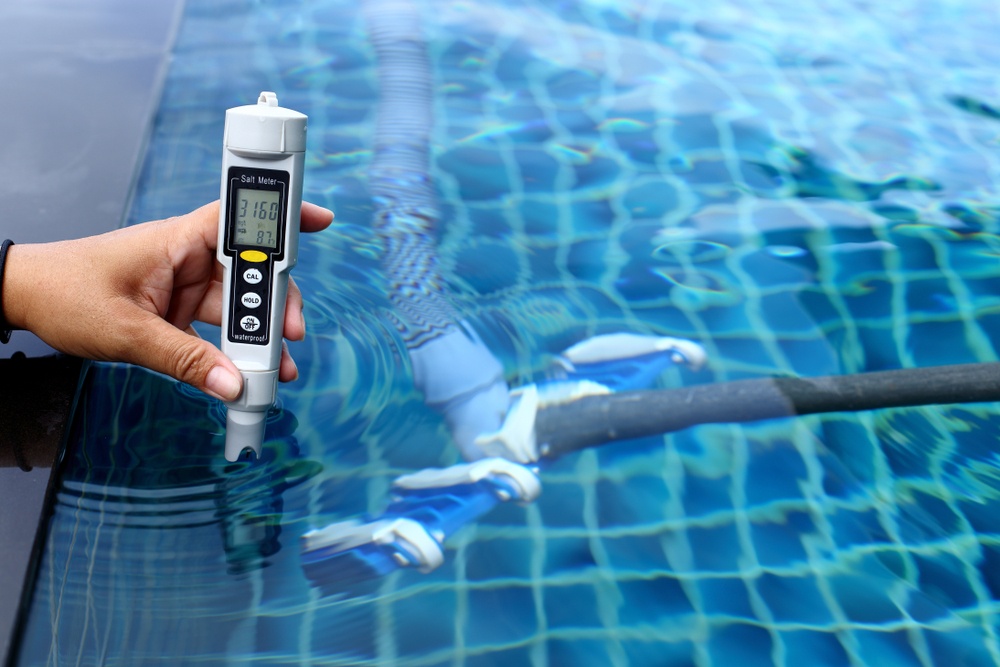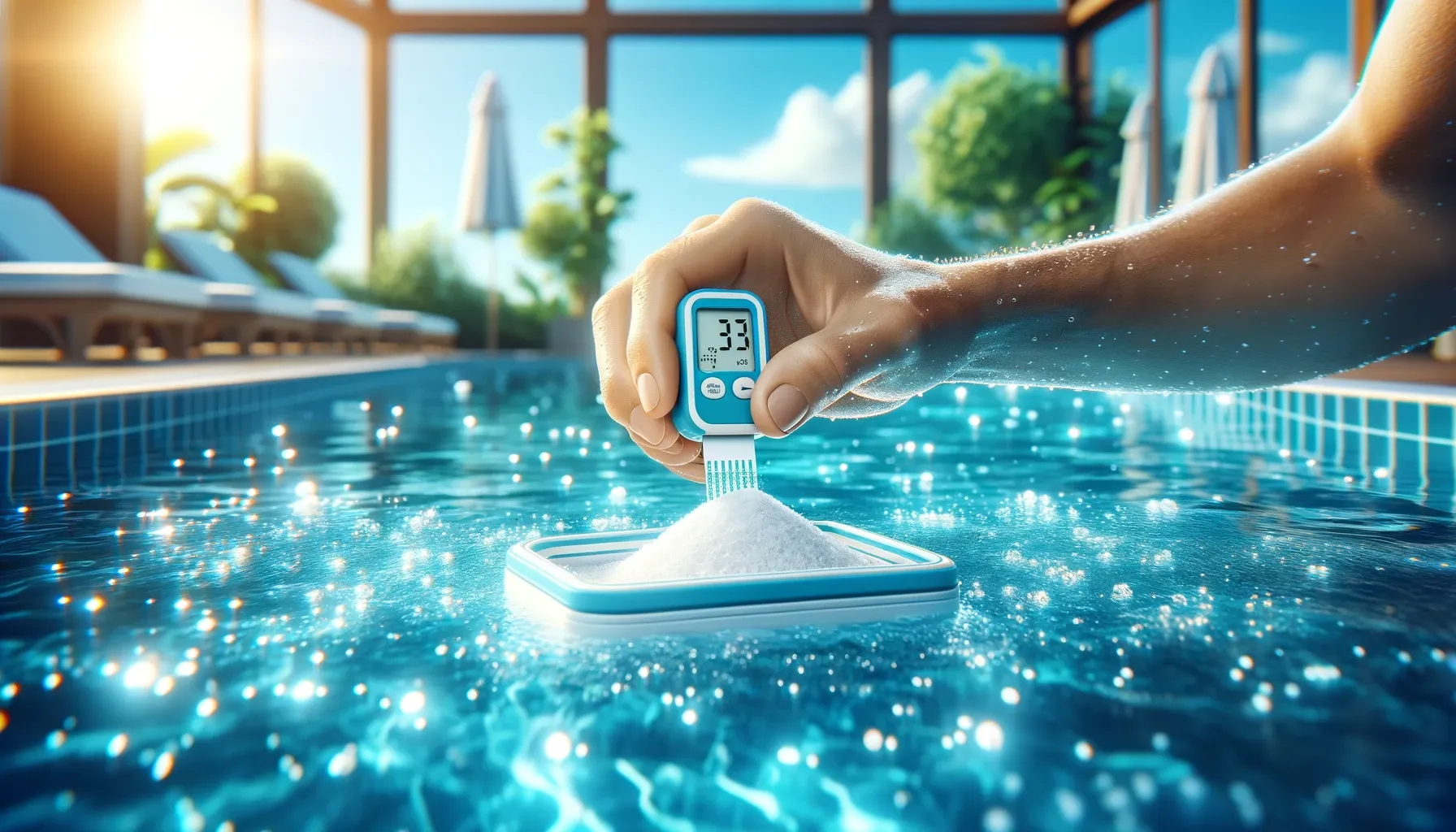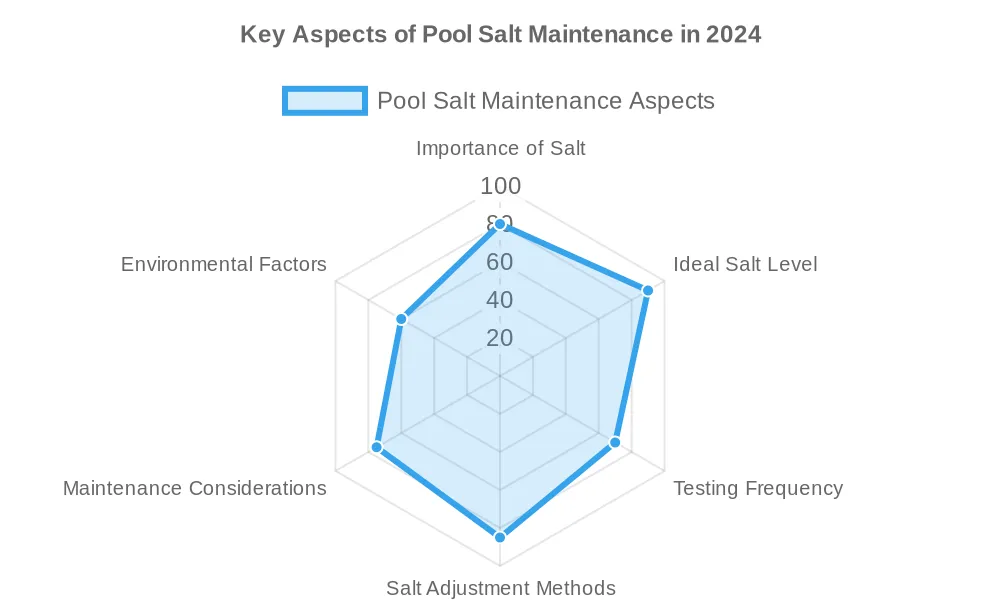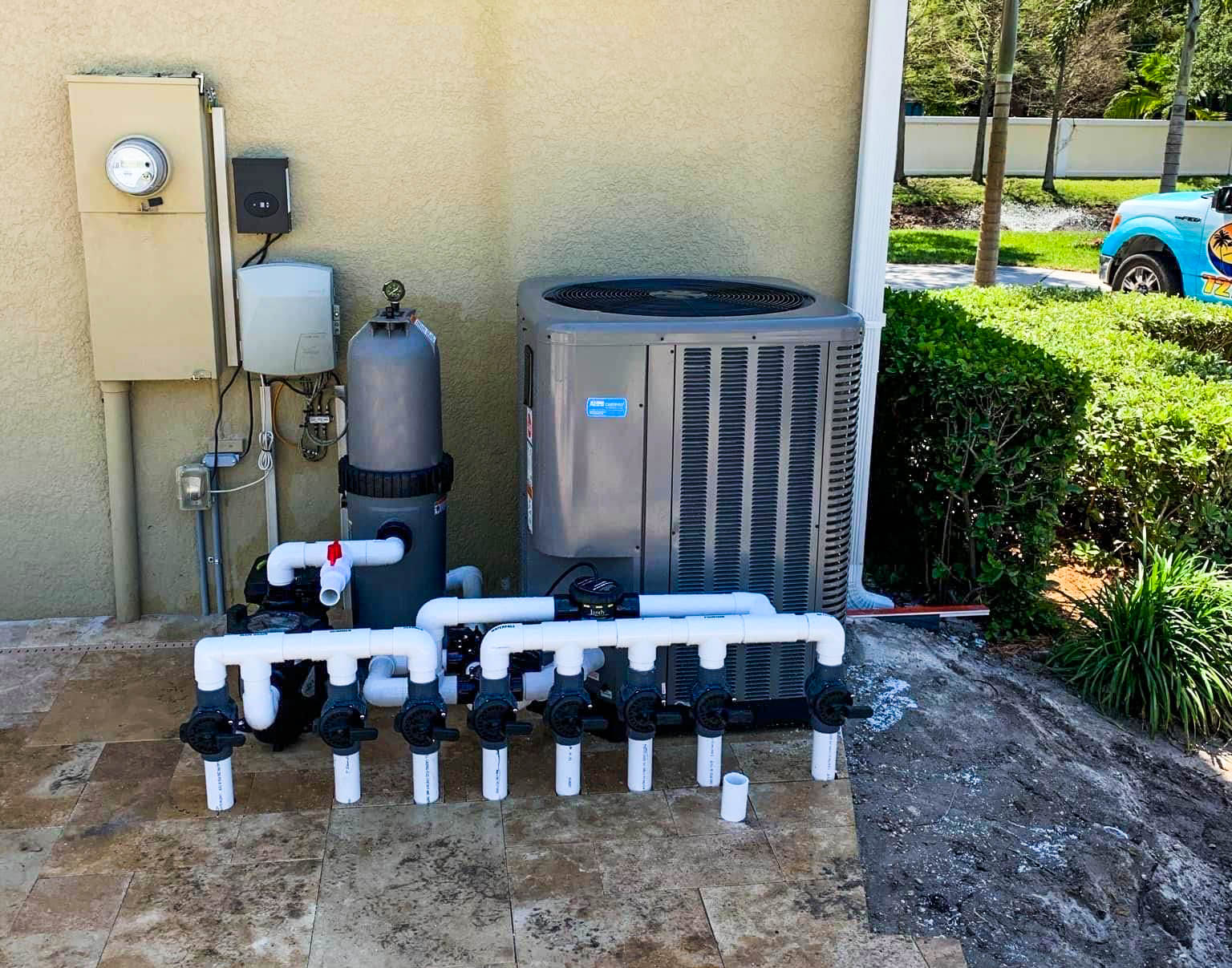
How Do You Know If Your Pool Needs Salt?

As a proud pool owner, you recognize the joy and value your swimming oasis brings to your home. But, with great enjoyment comes the responsibility of maintenance, particularly in ensuring the right balance of salt in your pool. But how do you know if your pool needs salt? We’re committed to helping you navigate this aspect of pool care with ease and precision.

Latest


How Do You Properly Clean a Fiberglass Pool in 2024?

DIY Pool Pump Cover Ideas for 2024
Categories
The Importance of a Pool Having Salt
Salt plays a crucial role in the health and maintenance of your swimming pool, especially if you have a saltwater system. It’s the backbone of keeping your pool water clean, safe, and enjoyable. But how do you know if your pool needs salt? The answer lies in understanding the balance required to keep your pool in top condition.
The salt in your pool isn’t just ordinary table salt; it’s a pivotal part of the pool’s chlorination system. In a saltwater pool, the salt acts as a disinfectant. It’s converted into chlorine through a process called electrolysis, which occurs in your pool salt chlorine generator. This chlorine then plays its part in keeping the water free from bacteria and algae. The beauty of this system is its ability to recycle the salt back into the pool, creating a self-sustaining cycle.
The Right Salt Level: Striking the Balance
Achieving the perfect salt balance in your pool is both an art and a science. The ideal salt level for most residential pools is between 2,700 to 3,400 ppm (parts per million). This range ensures optimal performance of your salt chlorinator and overall water quality. But why is maintaining this balance so important?
Firstly, if the salt level is too low, the chlorinator can’t produce enough chlorine, leading to under-sanitized water. This situation can quickly become a breeding ground for unwanted bacteria and algae. On the other hand, too much salt can cause issues as well. High salt levels might lead to a salty taste in the water and can even cause your chlorinator to shut down. Moreover, excessively salty water can have corrosive effects on certain pool components.
Knowing When to Add Salt
The question then arises: How Do You Know If Your Pool Needs Salt? The most straightforward method is through regular testing. You can use digital salt meters or test strips specifically designed for pool use. These tools will give you a clear reading of your current salt level. It’s advisable to perform these tests periodically, especially after heavy rainfalls or significant water replacement, as these events can dilute the salt concentration.
Adjusting Salt Levels in Your Pool
Mastering Salt Level Adjustments
Adjusting the salt levels in your pool doesn’t have to be a daunting task. With a few practical tips, you can ensure your pool remains a haven of relaxation and fun. The key is to act promptly based on the test results. If the salt concentration is low, adding the right amount of grade salt is crucial. Conversely, if the salt level is high, you may need to dilute your pool water by partially draining and refilling it.
Step-by-Step Salt Addition
When it’s time to add salt, there are a few steps you should follow for a seamless process:
- Test First: Always test your pool’s current salt level before adding more. This step ensures you’re not over-salting, which can be just as problematic as low salt levels.
- Calculate the Required Amount: Based on your pool’s volume and the current salt level, calculate the amount of salt needed to reach the optimal range.
- Choose the Right Salt: Use only pool-grade salt, which is specifically designed for saltwater pools. This type of salt dissolves quickly and doesn’t contain additives that could cloud your pool water or damage the pool systems.
- Distribute Evenly: When adding salt, spread it evenly over the pool’s surface. Avoid dumping it all in one spot.
- Allow for Dissolution: After adding salt, run the pump that you’ve connected to your pool to help dissolve and distribute the salt evenly throughout the pool. This process may take a few hours.
- Re-test and Adjust: Once the salt has had time to dissolve, re-test the water. If the level is still not in the ideal range, adjust accordingly.
Common Pitfalls to Avoid
While adjusting salt levels, there are a few common pitfalls you should be aware of:
- Overcorrection: It’s easy to add too much salt if you’re not careful. Always add smaller amounts and re-test instead of making large adjustments all at once.
- Neglecting Maintenance: Regularly check your salt chlorinator and other pool equipment for any signs of wear or damage. Proper maintenance ensures the longevity and efficiency of your pool systems.
- Ignoring Environmental Factors: Rainfall, heavy usage, and even the sun’s intensity can affect your pool’s salt level. Keep these factors in mind when monitoring your pool
The Significance of Regular Pool Maintenance When it Comes to Salt Levels
Maintaining the health of your pool is not just about adjusting salt levels; it encompasses a comprehensive approach to ensure every aspect of your pool is functioning optimally. Regular maintenance includes checking pH levels, ensuring the filtration system is clean and efficient, and inspecting all pool equipment for any signs of wear or damage. This routine care is crucial in prolonging the life of your pool and providing a safe, clean environment for you and your family to enjoy.
Why Routine Checks Matter
Routine checks and maintenance prevent minor issues from escalating into major problems. They ensure that your pool remains a source of joy rather than a burden of constant repair and adjustment. Regular maintenance helps in:
- Keeping water chemistry balanced
- Ensuring efficient functioning of the pool’s filtration system
- Identifying potential issues early, saving time and money
- Maintaining the aesthetic appeal of your pool
Transform Your Backyard with PoolForce
Beyond maintenance, PoolForce specializes in installing high-quality fiberglass pools. We are experts in transforming backyards into luxurious escapes. Whether you’re considering a new pool installation or revamping your existing space, our team is equipped to bring your vision to life. Our focus on quality, aesthetics, and functionality ensures that your new pool will be a centerpiece of your home for years to come.
Conclusion
Understanding and maintaining the right pool salt level is essential for ensuring a pleasant and healthy swimming experience. With the insights provided in this article, you can confidently manage your pool’s salt levels and overall maintenance.
If you’re ready to elevate your pool experience, whether through expert maintenance services or the installation of a stunning new fiberglass pool, PoolForce is here to assist. Contact us today to learn more about our services and how we can transform your backyard into a serene and inviting oasis.
Remember, a well-maintained pool is more than just a body of water; it’s a source of joy, relaxation, and lasting memories.
Latest

How to Maintain the Recommended Salt level in your Pool in 2024

How Do You Properly Clean a Fiberglass Pool in 2024?

DIY Pool Pump Cover Ideas for 2024
Categories
YOU'RE NOT IN THIS ALONE
We are with you every splash of the way
Need a pool fix or looking for an upgrade? We’re just one click away to help with all your pool needs.

